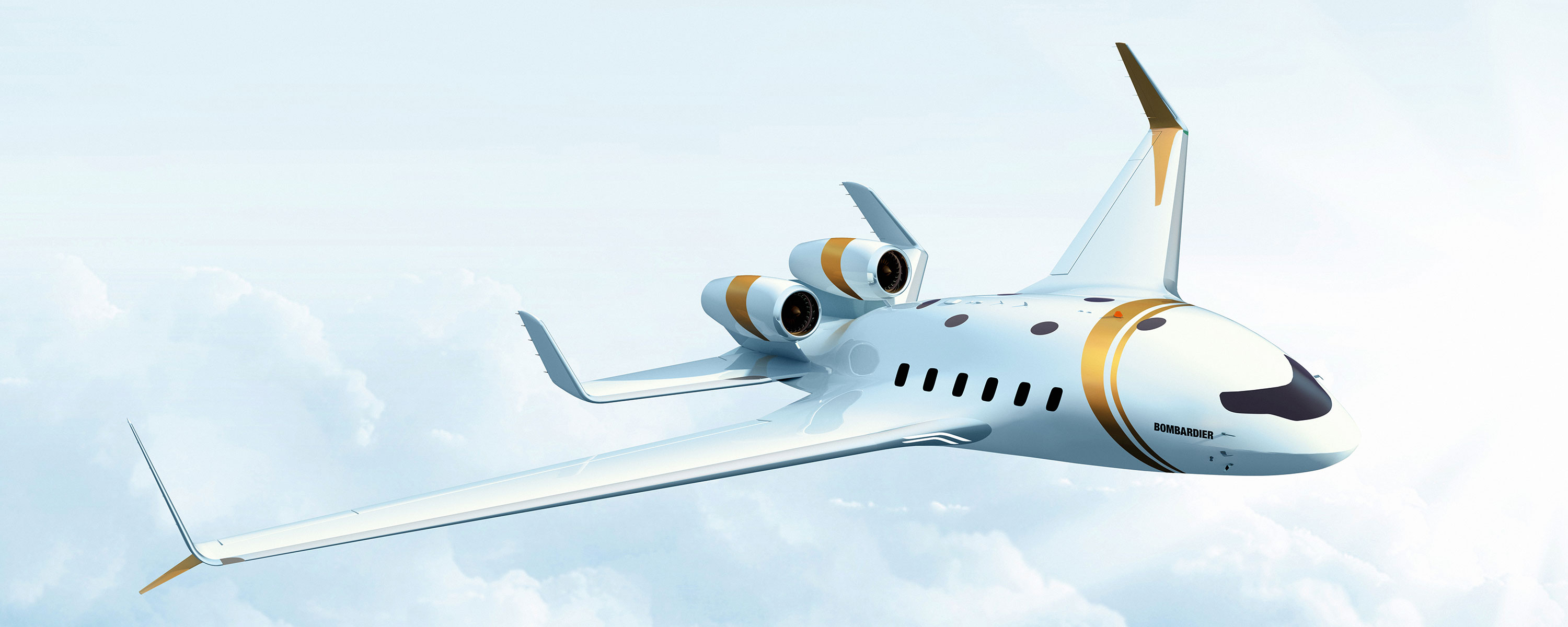Our history
Celebrating 80 years of creativity, growth and a relentless desire to innovate, Bombardier has grown from its beginnings as a family business in rural Quebec, Canada, to becoming the maker of the world’s finest business jets. Curiosity, ingenuity, passion and pride live within us… yesterday, today and tomorrow. This is our story.
It started with ingenuity and the need to help people travel
Bombardier grew out of a young mechanic’s inventive and entrepreneurial spirit. Born in 1907, Joseph-Armand Bombardier built his first “snow vehicle” at the young age of 15. His motivation? To help people travel across the snow-covered roads of rural Québec in Canada.
Thus, in 1937, Joseph-Armand Bombardier achieved his first major commercial success with the launch of the seven-passenger B7 snowmobile. Five years later, L’Auto-Neige Bombardier Limitée was officially founded to manufacture the 12-passenger B12 snowmobile. A series of other snow-going vehicles followed for ambulance, freight transport, mail delivery and school transportation services.
Development of new markets with recreational products
Joseph-Armand Bombardier never abandoned his dream of inventing the perfect personal snowmobile. His persistent experimentation eventually spawned a brand-new industry: snowmobiling. In 1959, he launched his world-famous Ski-Doo.
Laurent Beaudoin takes the wheel
Laurent Beaudoin, the founder’s son-in-law, became President of the company in 1966 and proved to be as visionary and innovative as Joseph-Armand Bombardier. Under Beaudoin’s inspired leadership, the company entered a new era of organic growth and diversification through strategic acquisitions. In 1969, taking the company public further fueled growth, with listings on the Montreal and Toronto Stock Exchanges.
Bombardier brings in the trains
In 1970, Bombardier entered the railway business with its first acquisition outside of Canada: Lohnerwerke in Vienna, Austria, a manufacturer of motor scooters and trams, and its subsidiary, the engine manufacturer ROTAX.
However, it was when the oil crisis struck in 1973 and forced Bombardier to halve its snowmobile production that the company became more serious about the railway business. Laurent Beaudoin and his management team completely redeployed the company’s excess manufacturing capacity, acquired mass transit technologies and applied Bombardier’s manufacturing know-how to build rolling stock.
In 1974, Bombardier won its first mass transit contract to manufacture 423 cars for the city of Montreal’s subway system. Later, in 1982, the $1 billion US contract to supply 825 subway cars for the New York City Transit Authority positioned Bombardier as a North American leader in rail transit.
Bombardier takes to the skies
Sixteen years after diversifying into rail transportation, Bombardier took flight in the aerospace sector in 1986 with the purchases of Canadair, the leading Canadian aircraft manufacturer of Challenger widebody business jets, and the CL-215 amphibious firefighting aircraft.
The iconic Challenger aircraft platform never failed to impress and raise industry standards. Bombardier has continued to develop the Challenger, introducing new models featuring the latest technological advances. Today, Challenger aircraft are the best-selling business jets among the world’s top corporate flight departments and charter operators.
Following in the CL-215’s footsteps, the Bombardier 415 amphibian launched in 1994 remains the only aircraft specifically designed for aerial firefighting and can be configured for other utility roles, including maritime search and rescue, surveillance and personnel transport.
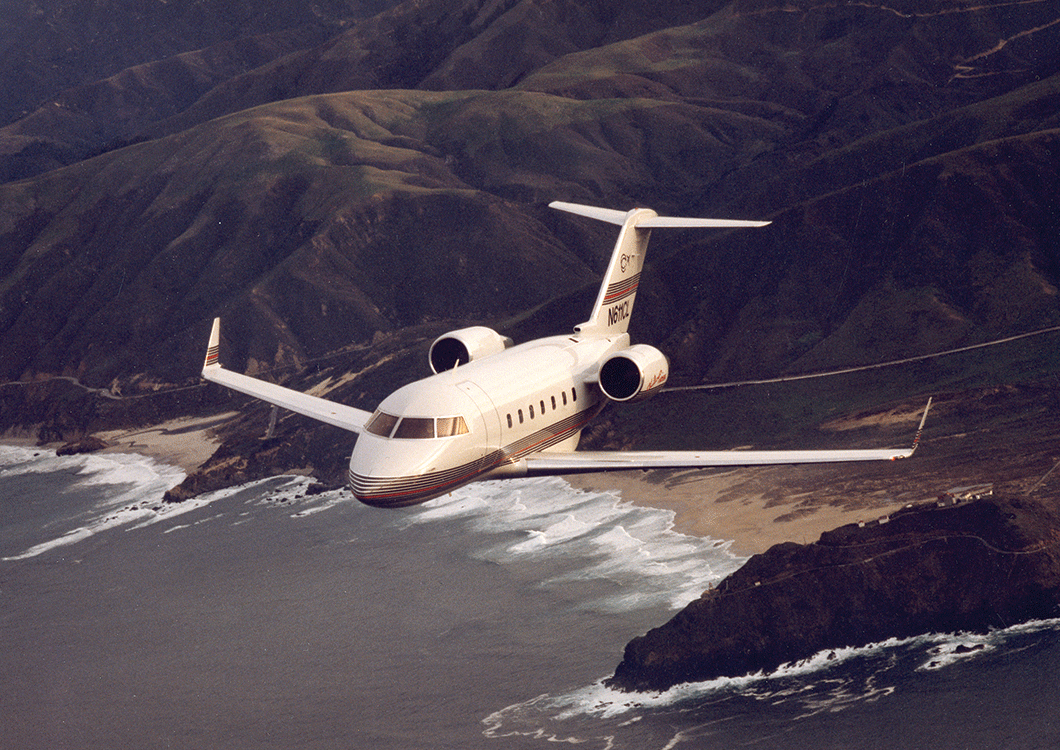
Bombardier’s CRJ revolutionizes regional transportation
In 1989, now with a great team of aerospace engineers, Bombardier launched the 50-seat Canadair Regional Jet (CRJ) program, which was certified in 1992. The CRJ revolutionized regional travel by connecting smaller cities to major hubs, making air travel accessible to most people. The CRJ program later expanded with the launch of the 70-seat CRJ700 in 1997, the 86-seat CRJ900 in 2000 and the 100-seat CRJ1000 in 2007. Today, the CRJ Series family of aircraft is the world’s most successful regional aircraft program.
And the aviation division keeps growing with Learjet
The Learjet Corporation acquisition in 1990 allowed Bombardier to launch the Learjet 60, which would soon become the top-selling aircraft in its class. This iconic private jet has since been reinvented and perfected by Bombardier engineers. The latest version, Learjet 75 Liberty is built on legendary Learjet strengths and successes while leveraging the latest aircraft technology. The jets feature a new modern design interior, a next-generation cabin management system, superior aircraft performance and low operating costs.
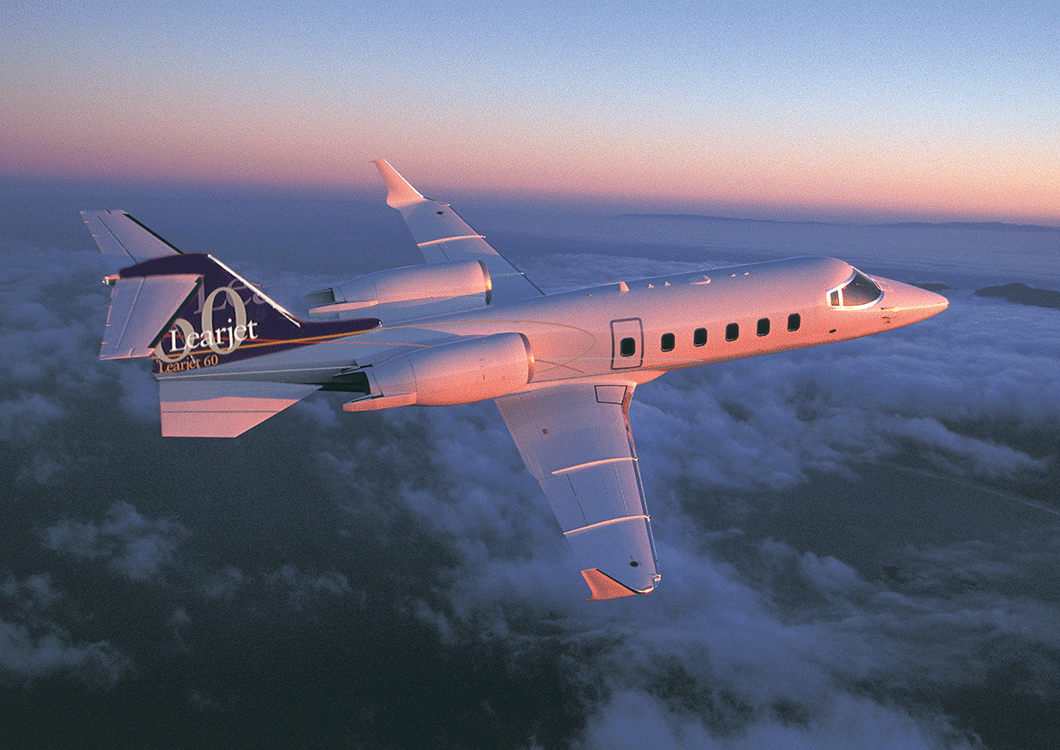
Engineering challenge: Making commercial turboprops quiet!
With its acquisition of Boeing’s de Havilland division in 1992 and its famous Dash 8, Bombardier became a leader in the growing market niche of regional airliners and the only one to offer both jet and turboprop aircraft in the 50-seat category. Bombardier later introduced an ingenious noise suppressing system making the aircraft almost as silent as a jet. In fact, the aircraft was so quiet that it was renamed the Q Series.
The Global: Bombardier’s crown jewel
In 1993, Bombardier announced its decision to develop its all-new ultra long-range Global Express business jet, which would offer unparalleled comfort and the ability to fly non-stop from Montreal to Tokyo. The aircraft made its first flight in 1996 and entered service in 1999.
The Global Express XRS (6000), the Global 5000, the Global 5500, the Global 6500 and Global 7500 followed. Setting new standards in cabin comfort and technology while connecting more cities faster than any other business jet, the Global aircraft family is the result of our unrelenting commitment to innovation, excellence and, most of all, our desire to deliver unmatched capabilities to our customers.
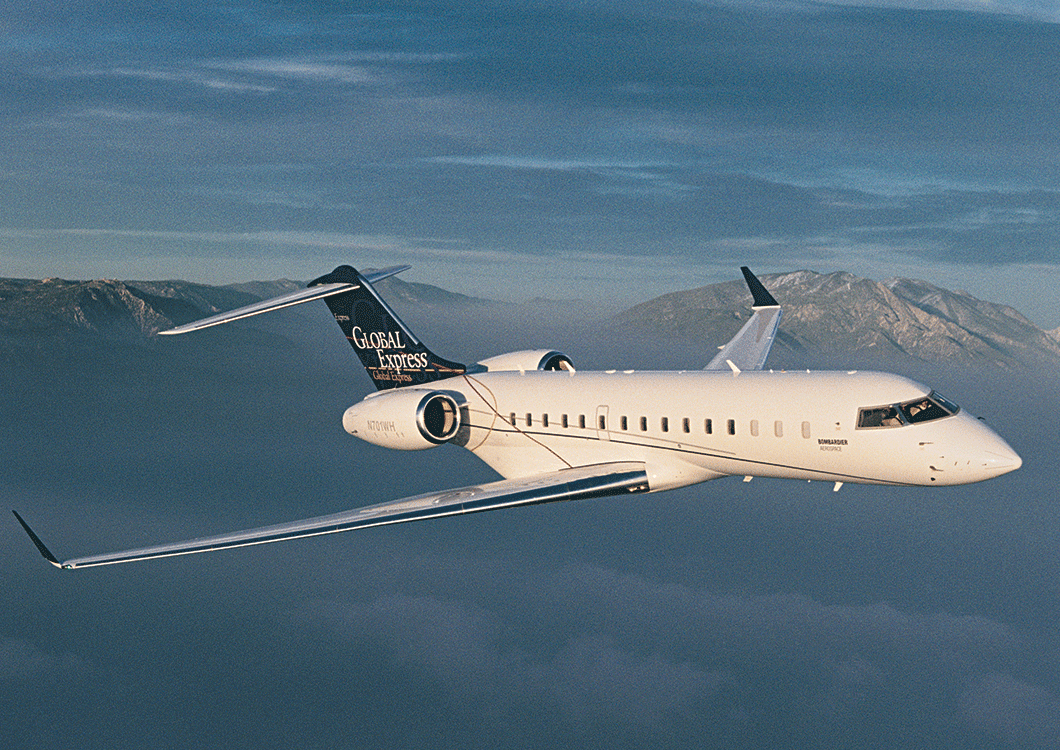
Recreational products outperform and BRP flies solo
While Bombardier took on the air and rail transportation markets, its recreational product division reached new heights. By 1995, Bombardier had half of the personal watercraft market with its Sea-Doo and Speedster boats and created an engine offering a 50% reduction in hydrocarbon emissions and up to 25% better fuel economy for its snowmobiles. Moreover, new to the all-terrain vehicle (ATV) market, Bombardier received industry recognition within a year, earning the best ATV award from ATV Magazine in 1999. As the company refocused on rail transportation and aerospace equipment, the recreational product business was sold in 2003.
The C Series
The C Series five-abreast commercial airliner family was launched in 2008, offering the economics, performance, environmental and passenger-oriented improvements demanded by airline customers for the next quarter century. For several years, a small team of aerospace engineers and professionals created what would become the most advanced commercial aircraft on the market. The first flight of a C Series aircraft took place in 2013.
Lufthansa Group, a leading German company, was the first carrier to show interest, ordering up to 60 aircraft. Bombardier’s largest C Series order came from Delta in 2016; an order for 75 firm CS100 aircraft with options for 50 more CS100 aircraft.
In the fall of 2017, Bombardier announced a partnership with Airbus on the C Series aircraft program. The agreement brought together Airbus’ global reach and scale with Bombardier’s newest, state-of-the-art jet aircraft family, positioning both partners to fully unlock the value of the C Series platform and create significant new value for customers, suppliers, employees and shareholders.
Bombardier Transportation takes on the world
As our aviation business was growing, Bombardier Transportation became the worldwide leader in the rail equipment industry by acquiring Adtranz in 2001. In 2002, Bombardier relocated its transportation headquarters from Montréal to Berlin. This move strengthened its ability to serve Europe, the world’s largest rail market.
Innovations in railway technology abound for the next decade, including: ZEFIRO (2005), Bombardier’s first very high-speed train; the very first hybrid train in the world, the Autorail Grande Capacité (2007) with dual mode and dual voltage technology; the third generation of INNOVIA driverless systems (2010); and the innovative last mile diesel TRAXX AC locomotive (2011).
Bombardier further strengthened its leadership in rail transportation with major orders for light rail vehicles, commuter trains and intercity trains from Germany, France and South Africa respectively.
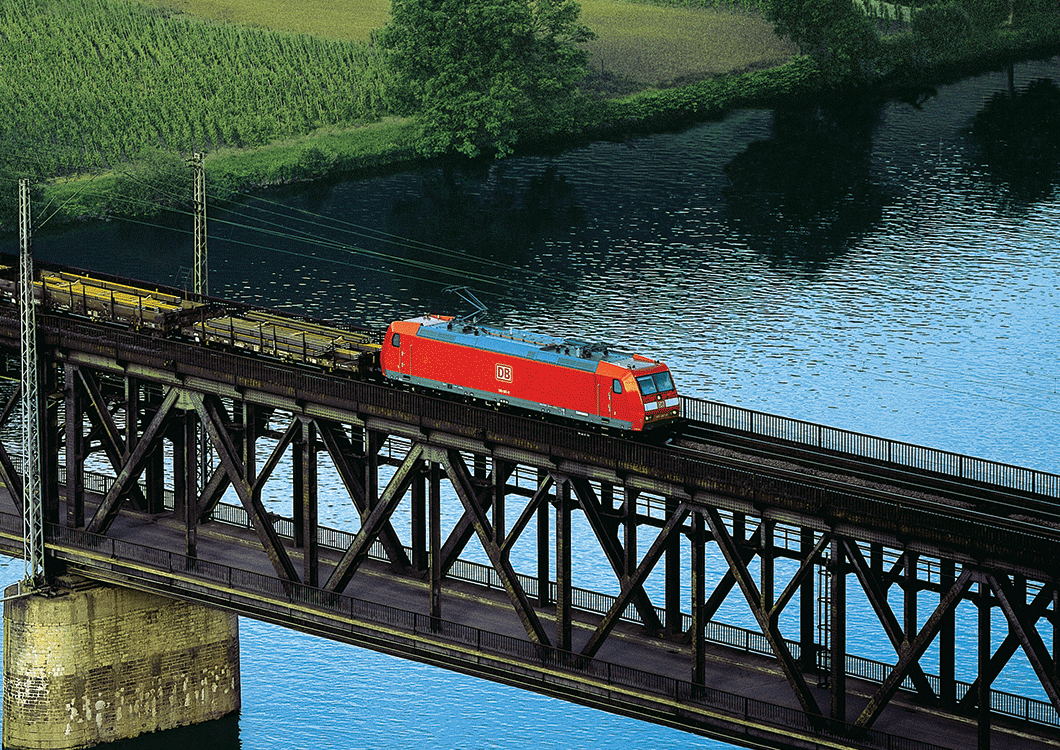
Bombardier’s transformation
In 2015, game-changing actions were needed to preserve Bombardier’s legacy and ensure its future. A five-year restructuring plan was developed to deleverage and strengthen the company’s balance sheet.
After solidifying a partnership with the Government of Quebec and Airbus, Bombardier sold its interest in the C Series/A220 partnership, closing the commercial aerospace chapter of its history. Bombardier will forever be proud of the industry-defining impact it made on commercial aviation, thanks to the ingenuity of its people. Bombardier is equally proud of the responsible way it exited commercial aerospace, preserving jobs and reinforcing the aerospace cluster in Quebec and Canada.
In early 2020, Bombardier announced the sale of Bombardier Transportation to Alstom; a transaction that would close another important chapter of its history.
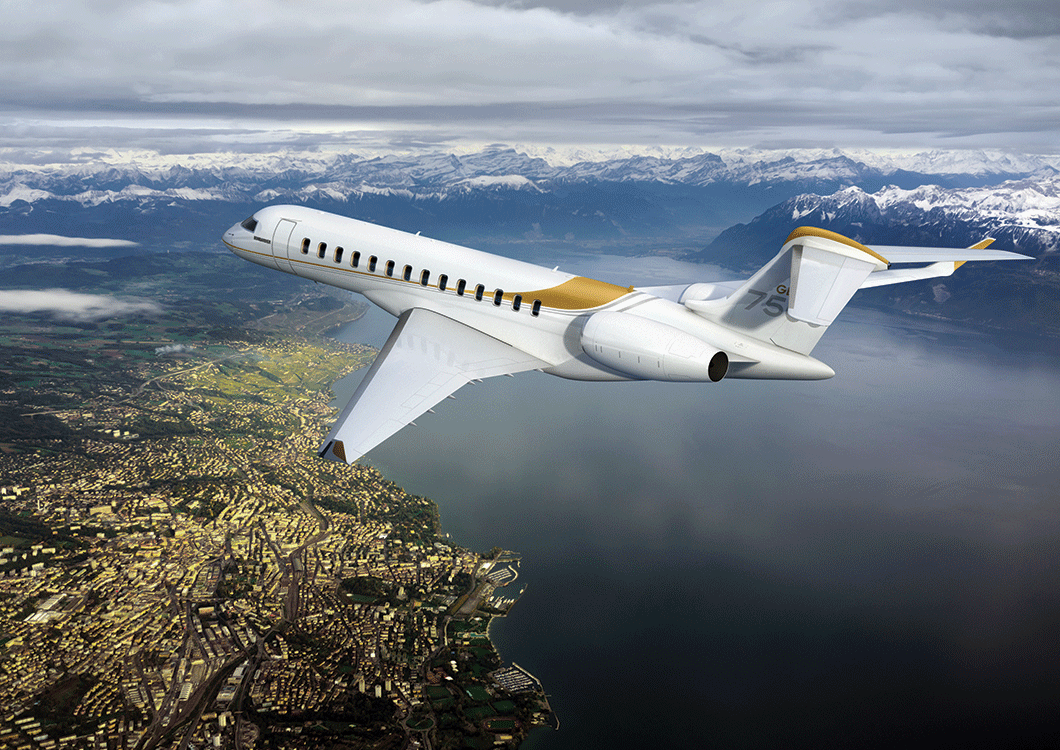
Spreading our wings
Its transformation complete, Bombardier is now a global leader in aviation, creating innovative and game-changing business jets. Our products and services provide world-class experiences that set new standards in passenger comfort, energy efficiency, reliability and safety.
In late 2021, we launched the Challenger 3500, featuring the most technologically advanced cabin in its class and a full range of productivity enhancing features. And in 2022, we introduced the world to the industry’s new flagship, the Global 8000, an aircraft combining the fastest speed, the longest range and the smoothest ride with proven reliability and the healthiest, best-connected cabin in the industry. We are continuing to expand our service offerings, providing exceptional, around-the-clock support to customers worldwide operating our growing in-service fleet of more than 5,000 aircraft.
In 2022 we established Bombardier Defense to offer unique aircraft solutions to meet the growing needs of special mission operators. Our aircraft are taking on a full range of demanding missions, from urgent humanitarian assistance, head-of-state transport to airspace calibration, infrastructure validation and battlefield and border surveillance.
As our aircraft soar to new heights, Bombardier continues to keep a keen eye toward the future. In 2022, we revealed our EcoJet research project , an ambitious, innovative platform aimed at advancing groundbreaking technologies in sustainable aviation.
The Bombardier story continues…
